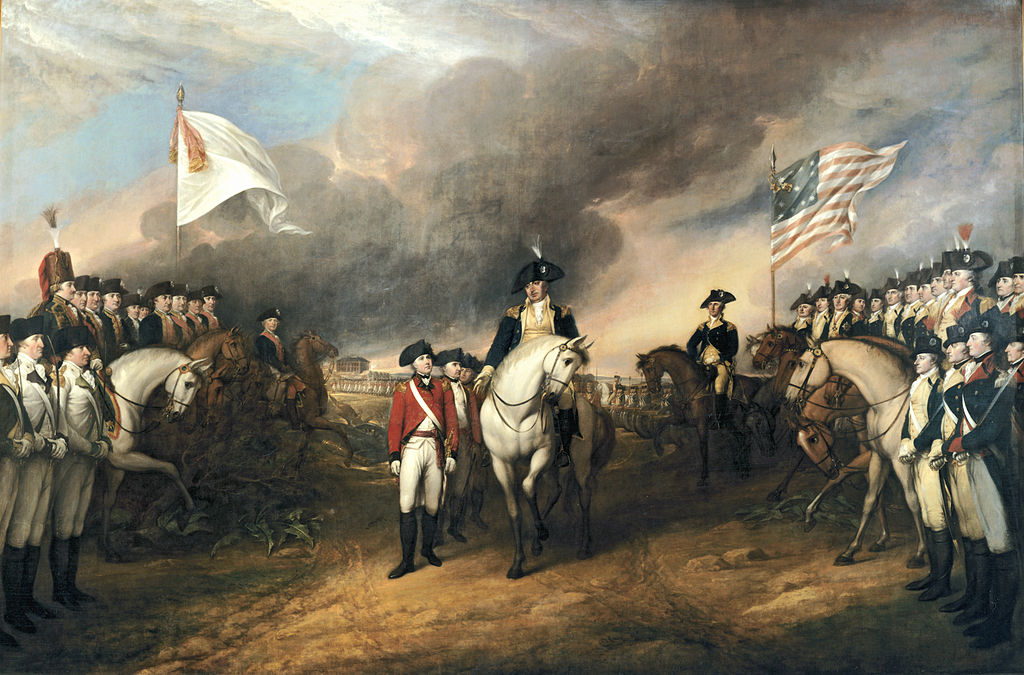It’s hard to imagine today, but the United States we know and love today came about through several hard-fought battles and wars. And while we all learned about the Revolution and Civil War in school, the truth is more interesting and sometimes more complicated than what you may have been taught.
Yorktown
Interesting Fact: The American Revolution did not end the day General George Washington won the battle at Yorktown, Virginia.
The battle, siege and surrender at Yorktown is one of the most pivotal events on American soil, as it forced British troops to surrender to General George Washington and ending the American Revolution. The war did not end immediately after the surrender on October 19, 1781, but it did lead to the final agreement between leaders from both countries to cease all hostilities.
A portrait in the U.S. Capitol depicts the events of the surrender. The leader of the British troops, Lieutenant General Charles Cornwallis feigned illness rather than surrender personally and sent his second in command. General George Washington, always focused on protocol and honors, refused to accept the surrender from a subordinate, and had his own second in command, Major General Benjamin Lincoln formally accept surrender.

Fort Sumter
Interesting Fact: The Battle of Fort Sumter did not lead to the secession of states from the Union; that had already started to occur several months before the official start of the Civil War.
The Civil War was fought over a host of issues, primarily the issue of states’ rights, including issue of slavery. Tensions between southern and northern states had been brewing for years and in late 1860, several southern states including South Carolina seceded from the United States of America and created their own government, including electing a president and enlisting a standing army.
On April 12, 1861, Confederate troops fired on Union troops stationed at Fort Sumter, South Carolina, and after 36 hours of bombardment, the Union forces surrendered and evacuated the island fort. It was the first military confrontation of a war that lasted four years and claimed up to 750,000 dead on both sides.
Appomattox Court House
Interesting Fact: The end of the Civil War did not take place in an actual court house, but in a town named Appomattox Court House. The house used for the surrender was owned by Wilmer McLean, who had moved to the town after the first major battle of the Civil War was fought on his farm in Mananas Junction, Virginia. The war started and ended on his property.
Nearly four years after the official start of the Civil War, a battle was fought at Appomattox Court House, the county seat of Appomattox County, Virginia. Union Lieutenant General Ulysses S. Grant pursued Confederate General Robert E. Lee’s army and contained them in the small Virginia town. Without supplies and with dwindling troops, Lee had no choice but to surrender.
On April 9, 1861, Lee and Grant met at the McLean House in Appomattox Court House and worked out the terms of the surrender of Lee’s army. When news of Lee’s surrender reached other Confederate leaders, they too surrendered and brought the war to a close.
Little Big Horn: Custer’s Last Stand
Interesting Fact: The Battle at Little Big Horn was not the “last stand” of a massacred American army as many believe, but an an attack on a Native American gathering that resulted in a wholesale defeat by Federal troops.
As part of the ongoing effort to move Native Americans to reservations so territorial expansion expansion of the west could continue, the US Army fought a series of battle nicknamed the Indian Wars. Lieutenant Colonel George Armstrong Custer and his Calvary were working with other soldiers to remove Native Americans from land where gold had recently been discovered. A large gathering of Native Americans were at the Little Bighorn River for a religious festival. Both warriors and noncombatants were part of the group.
Hoping to ensure victory with a surprise attack, Custer ordered a daytime assault on the village on June 25, 1876. However, there were many more Indians capable of fighting than anticipated and they soon mounted effective defenses. Many troops escaped but those who did not, including Custer, were cornered on a hill, where, outnumbered significantly, they were all killed.
After the battle, reports portrayed the battle as a hostile and unprovoked attack by Native forces and led to an even stronger crackdown on Native Americans and increased the pace and intensity of forced relocations along the American frontier.
Pearl Harbor
Interesting Fact: Japanese airplanes, submarines and ships that attacked the US naval base at Pearl Harbor on December 7, 1941, were part of a larger attempt by Japan to keep the US out of the war, including coordinated attacks in the Philippines, Guam, Wake Island, Hong Kong and Singapore. However, the attempt backfired and war was declared the next day.
Early in the morning on Sunday, December 7, more than 350 Japanese aircraft attacked Pearl Harbor, the headquarters of the US Pacific Fleet. The planes sunk or damaged 16 ships, including the battleship the USS Arizona, which sunk so quickly that more than 1,100 of her crew were killed, going down with the ship. Three other battleships were sunk but successfully resurfaced and returned to service by the end of the war. Three and a half years later, the US dropped atomic bombs on Japan, forcing a conclusion to the Pacific theater of the war, and ending World War II on September 2, 1945.
The USS Arizona was turned into a living museum in 1962, and can be visited today at Pear Harbor, Hawaii. Surviving veterans of the attack can have their ashes laid to rest in the harbor.
So many battles and struggles took place on American soil, and it is important to remember the men and women who fought and died to ensure our way of life continues today.




